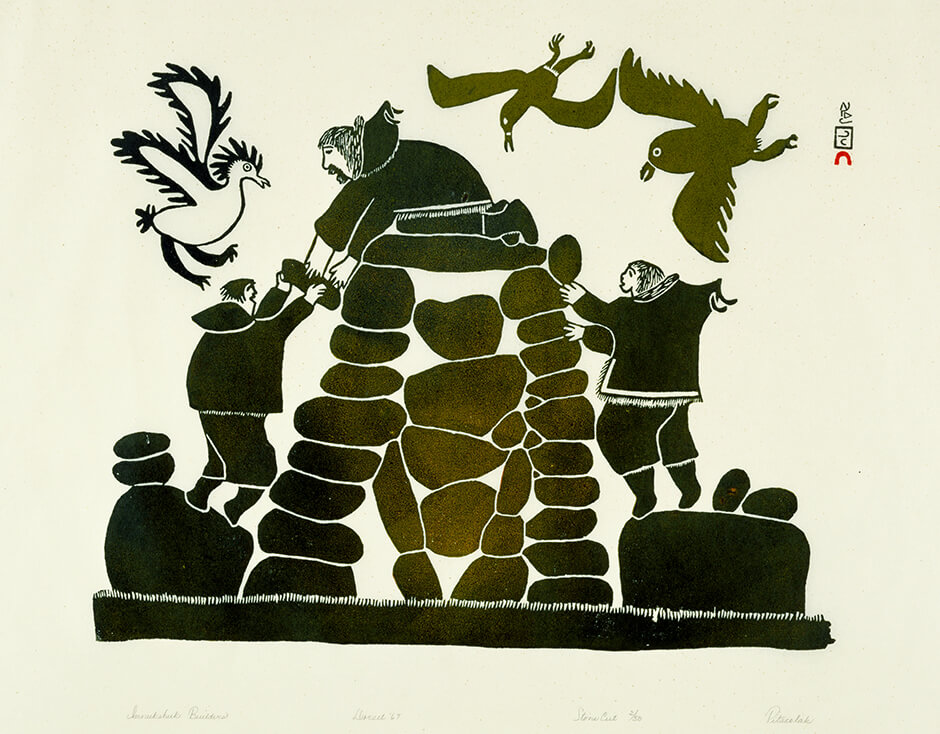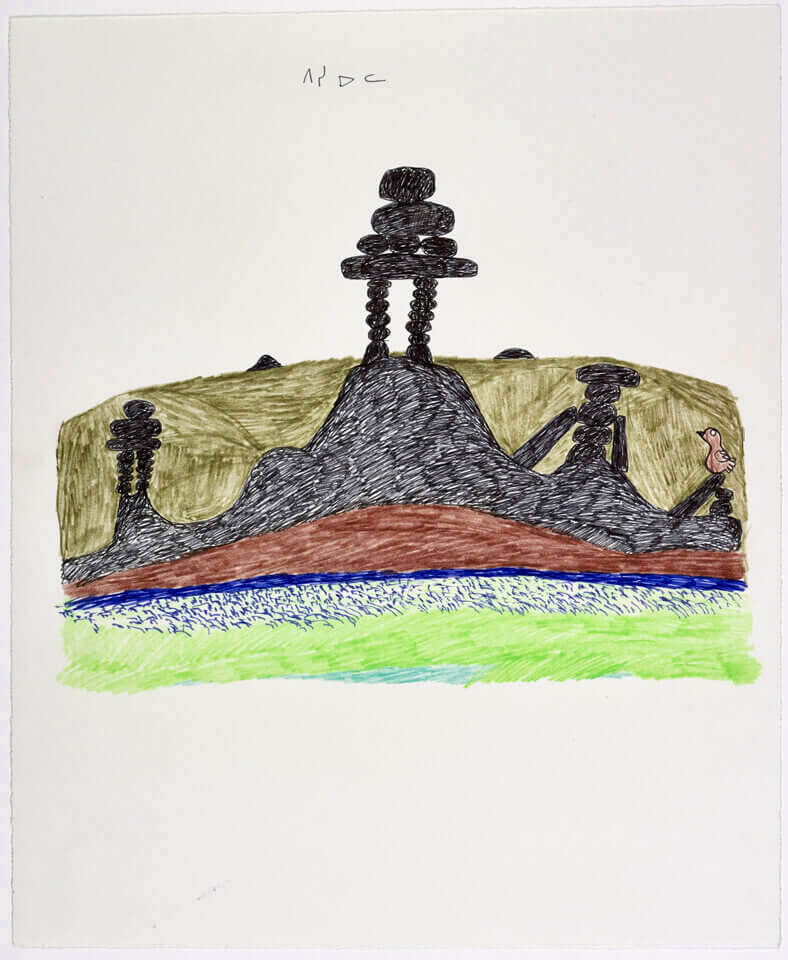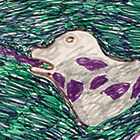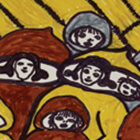Innukshuk Builders 1968

Pitseolak Ashoona, Innukshuk Builders, 1968
Stonecut on paper
69.8 x 60.9 cm
Cape Dorset annual print collection 1968
One of Pitseolak’s strongest compositions, this well-known print demonstrates the depth of personal and historical knowledge contained within images that often appear to be generic scenes of Inuit culture. Several years after Pitseolak created this image of three men building an inukshuk (a stone marker), she identified the man placing the top stone as her father, Ottochie. Pitseolak is remembering a specific time, when the men made an inukshuk on a hill behind the new settlement of Cape Dorset, established with the Hudson’s Bay Company (HBC) post in 1913. The inukshuk served as a beacon for the HBC supply ship, whose arrival in Cape Dorset was a major event. Hunters stood watch day and night at the inukshuk and fired shots in the air to announce the approaching ship. Inuit would travel from outlying camps to assist in offloading supplies. It was also a joyful occasion for sharing news and for family reunions and other gatherings.


Even before this time, inuksuit (the plural of inukshuk) figured prominently in Cape Dorset oral histories and legends, and later, in the visual arts; they appear in almost all of Pitseolak’s landscapes and camp scenes. For families such as Pitseolak’s, who made the crossing from Nunavik (Arctic Quebec) to Qikiqtaaluk (Baffin Island), the inuksuit at Tikivak and the Inuksugaluit point were a welcome beacon at the end of the journey.
Pitseolak’s drawing for Innukshuk Builders was selected for the annual Cape Dorset collection and made into a print. It became a popular image, though its personal and historical context was not widely known until much later. In the 1960s, when Inuit images were widely regarded as depictions of “old ways,” Pitseolak was aware that her drawings introduced an outside audience to the Inuit way of life, and equally conscious that she was recording knowledge for future generations of Inuit. This didactic motivation may have been paramount in her mind and would explain why she felt it unnecessary to identify individuals more clearly in her art. Pitseolak’s images suggest greater emphasis on depicting a shared history—an approach prevalent among the first generation of Inuit artists—rather than a need to convey a specific individual experience.

 About the Author
About the Author
 More Online Art Books
More Online Art Books
 Acknowledgements
Acknowledgements